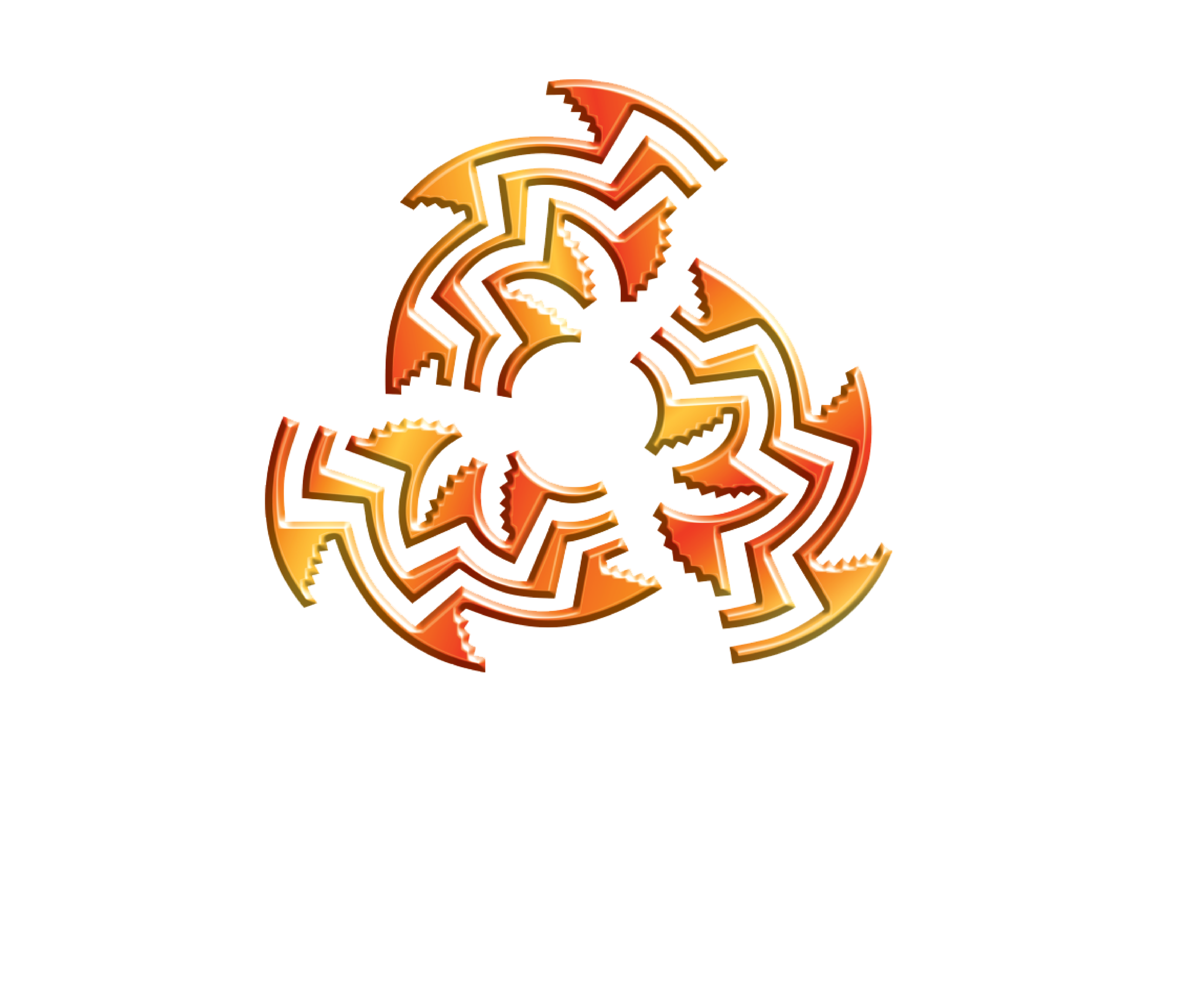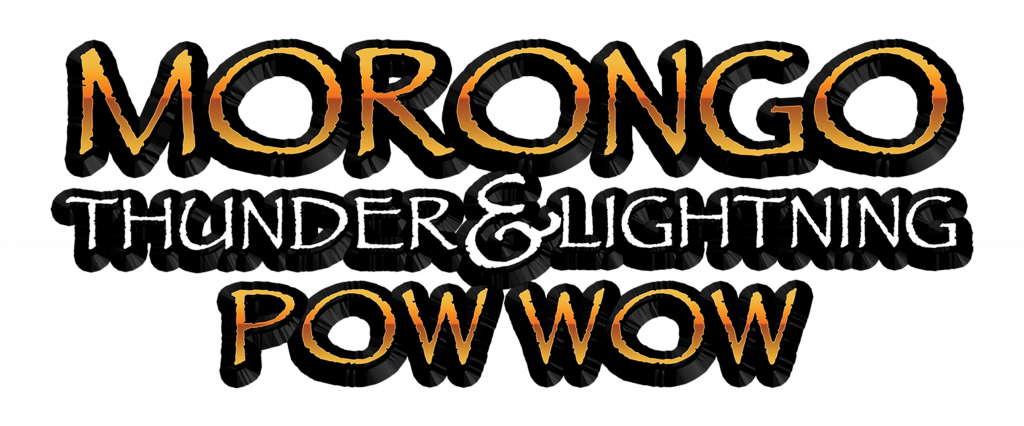TYPES OF SONGS AND DANCES
The songs and rhythms of Pow Wow have traveled through many generations. As Pow Wow celebrations have grown throughout North America, the informal gatherings of people around the drum have evolved into groups that sing and play together on a regular basis.
Pow Wows usually feature two host groups, a Northern Drum and a Southern Drum, representing the styles of the Northern (often Canadian) plains tribes, and those of the more southern tribes.
One of the most easily recognized differences between the two styles is the singing range. The northern style is high pitched, while the southern style is sung in a lower, more full-voiced register.
CAHUILLA BIRD SONGS AND DANCES
The bird songs and dances of the Cahuilla Indians chronicle the experiences and responses of the Cahuilla people as they migrated south. Through bird metaphor and allegory, the songs also act as lessons that instruct tribal members about stages in their lives. They are reminded that there is a proper time to “leave the nest” and start a family; that parents must let go of their maturing children.
The original Cahuilla Bird Songs were composed of more than 300 pieces that formed a cycle of stories. Songs were sung in a precise order that accurately accounted for the chronology of the migration. In a traditional setting where the complete cycle of songs were sung, the singing began at dusk symbolizing the beginning of the journey and ended at dawn – symbolic of the return home.
Protocol for singing these songs is less strict in structure than some Native American traditions where only specially designated individuals are allowed to perform certain ceremonies. Today, tribal descendants with singing talent are trained to sing the songs. Unlike many Native American dances, bird songs use no drums for accompaniment. Rhythm is supplied by gourd or tortoise-shell rattles filled with palm seeds.
GOURD DANCING
Gourd dancing is not actually a Pow Wow dance style, but is more of a separate type of dance. The songs originated as part of the Cheyenne Bow Society. Songs were later adapted by the Kiowa nation, as part of their ceremony celebrating the summer blooming of the red skunk berries. The dance survived in secret during the time tribal religious dances and ceremonies were outlawed by the U.S. Government. It reappeared during the 1940’s when the Kiowa elders performed it for the American Indian Exposition in Anadarko, Oklahoma.
It has grown in popularity since then, and is now danced by many other tribes after the Kiowa have given it to them. There is a strict brotherhood, called societies, among dancers and signers of the gourd dance. Traditionally, gourd dancing is performed prior to the Grand Entry, when the drum sings gourd songs for the dancers as they dance.
During the first song, dancers remain seated and shake their rattles in time to the song. During the second time through the song, dancers rise and dance in place, flexing their knees and shaking their rattles in time to the drumbeat. When three hard beats are introduced in the song, dancers make a slight bow and take small steps into the center of the arena where they remain dancing in place until song’s end. Only gourd dancers may dance a gourd dance, but the regalia of a gourd dancer is not too elaborate. It usually consists of a long sleeve shirt and pants, a gourd sash or vest, and a rattle.
MEN’S NORTHERN TRADITIONAL
The Men’s Northern Traditional style of dance is the oldest form of dance in Indian culture. Traditional dancers would “dance out” the story of a battle for those who had not been there or returning hunters would dance their tale of tracking an enemy or prey. The regalia has no prescribed look except for the bustle worn on the lower back. Traditional dancers never dance backwards as they perform, as this would be perceived as retreat. Also, they never turn in a full circle while dancing.
MEN’S GRASS DANCE
Several tribes dance their own version of the Grass Dance, with each of them having different ideas as to the origin. For some, it is an expression of the waving movement of the grass on a windy day. Another tribe remembers dancing in order to flatten out the long prairie grasses and try to kick stones out of the way in preparation for a ceremony. Still others think it originated to celebrate victory over an enemy.
Regalia is decorated with long, colorful fringes, which sway gracefully with the movement of the grass of the prairie. Dancers are expected to keep their heads moving. The purpose of this movement is to keep the roach crest feathers spinning. To keep the feathers moving constantly is one sign of a good dancer.
MEN’S FANCY DANCE
The Men’s Fancy Dance is the brightest and fastest of men’s dance styles. It originated in Oklahoma in the early 1900s when promoters of wild west shows encouraged Indian dancers to embellish their outfits and “dance fancy” for spectators.
The elaborate regalia features bright bustles, one at the top of the back and a larger one at the bottom of the back. It is based on the standard double step of the Traditional and Grass Dance, but it takes off from there with fancy footwork, increased speed, and acrobatic steps. Dancers must keep up with the music and follow the changing beat of the drum. Watch these dancers to see if they stop on the last beat of the drum.
MEN’S CHICKEN DANCE
The Men’s Chicken Dance originated with the Blackfoot people and is representative of the plains prairie chicken’s mating dance. The dance is characterized by jerking of the neck and a pecking like motion of the head, tapping on the ground, slow spinning movements, and a stepping motion in a forward direction.
MEN’S SOUTHERN STRAIGHT
The Men’s Southern Straight Dance, also knows as Southern Traditional, is the formal and original dance of most of the Oklahoma tribes. It is a dignified style, where the dancers keep a steady flowing pace that is not interrupted with fancy moves or extra footwork. Straight dancers wear long shirts, leggings, wide belts, and thick leather drops. Each man carries a fan in his left hand and a beaded pointing stick in his right that he uses to follow a “trail”.
The term “Straight” in a Pow Wow context refers as much to the act of following a trail, dance stick in hand, as it does to the lack of a back bustle. Dancers are judged on their ability to stay in step with the beat and to look very convincing in their search.
WOMEN’S NORTHERN TRADITIONAL DANCE
The Women’s Northern Traditional style is a dance of grace and elegance. Dresses can be either buckskin or cloth and can vary a great deal from one dancer to the next. The dancing itself also varies widely, based on the tribe represented.
Northern Plains Traditional dancers are often referred to as “stationary”; dancers because they remain stationary and bounce in one place in time with the beat of the drum. Their feet should never completely leave the ground, which symbolizes the close bonds between women and their Mother, the Earth. Dancers from the northern tribes walk-around the arena is a double-step style similar to the men’s style. Both Stationary and Walk-Around style dancers raise their fan during the honor beats and sway their fringe dresses and shawls in time with the beat of the drum.
WOMEN’S SOUTHERN TRADITIONAL DANCE
The Women’s Southern Traditional style of dance is similar to Women’s Northern Traditional in the way the dance is performed, but there are differences. Southern Dancers move in clockwise circles, stepping to a slightly slower rhythm. Another difference; Southern Dancers bow at the waist and turn from side to side during the honor beats, while Northern Dancers raise their fans.
Women’s Traditional southern dancers wear buckskin or cloth dresses with matching leggings, purses, beaded moccasins, and necklaces or bone breastplates. Feathers and beadwork are worn in the hair. A folded shawl over the left arm completes the regalia, as the long fringes sway in harmony with their steps to the beat of the drum.
Both Northern and Southern Traditional styles wear regalia with a traditional concentration, integrating pieces that traditional Native women wore and used in daily work, such as awl cases and knife pouches.
WOMEN’S JINGLE DRESS DANCE
The Jingle Dress Dance originated with the Ojibwa nation. It’s a medicine dance that has regained popularity and is now a common category at most Pow Wows. The dress is covered with tin cones made from snuff tin covers. The Contemporary Jingle Dress is decorated with ribbon, appliqué, and beadwork with matching leggings, moccasins, purse, and hair ornaments. Feathers and plumes are worn and a fan is carried and raised during the honor beats of the song. The Traditional Jingle Dress is primarily black and has 365 cones representing each day of the year.
Traditional Jingle dancers do not wear plumes and don’t carry a fan. They raise their hands on the honor beats in order to receive healing. Dancers are expected to stop precisely when the music does with both feet on the ground.
WOMEN’S FANCY SHAWL DANCE
The Fancy Shawl Dance is not a traditional women’s dance style. It is a relatively new addition to the dance competition created in the early 50’s and 60’s. Fancy Shawl Dance regalia consists of a decorative knee-length cloth dress, beaded moccasins with matching leggings, and a fringed shawl draped over the shoulders. Footwork is the chief element of the dance. Fancy Shawl Dancers must follow the changing beat of the drum and stop when the song ends with both feet on the ground.
TINY TOTS DANCE
The Tiny Tots dance includes young children, ages 5 and under, who are just learning to dance. All children are encouraged to learn to dance and begin competing as soon as they are able to walk. The inclusion of youngsters in the Pow Wow dances ensures that the next generation carries on the Pow Wow tradition – and work to become the champion Pow Wow dancers of tomorrow!


